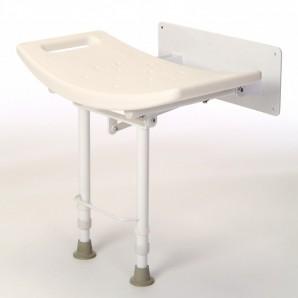Being aware of the range of bathroom disability aids is important for people looking to retain an independent life in old age. Keeping oneself clean and being able to wash alone is something we all want to do for the duration of our lives. With the onset of certain physical conditions, this is more difficult. Thankfully, special equipment and adaptations are available which make things easier.
Getting in and out of the bath
Many people lose flexibility and strength as they get older. This can make the process of getting in and out of the bath difficult. A bath step placed next to the outside wall of the bath can make it less of an obstacle.
Similarly, a bath seat inside the bath itself raises the height of its floor. This reduces the distance of travel getting and out and puts less strain on the body.
A support rail fixed to the wall next to the bath is also helpful. This provides a point of contact which again helps with lowering or raising oneself. There are also rails available which clamp onto the side of the bathtub.
These have some advantages over wall-mounted grab rails. Not only do they assist with the process of bath entry and exit. As they are usually about waist height, they also help when climbing the bath step, or even standing next to the bath drying off.
Aids to assist with one’s balance are important in bathroom or wet-room settings. Because of the hard wet surfaces, people can be prone to slipping in this environment. While grab rails fixed to the walls or bath itself are useful, large vertical poles are also an option.
Floor-to-ceiling support poles
These fit to the entire height of the room from floor to ceiling and are sometimes equipped with horizontal support rails attached. They provide a purpose-built support point on which the user can lean, assisting their balance. The advantage of this sort of installation is that its position is flexible and does not need to be wall-mounted.
This type of fixture requires installation by a qualified tradesman. It is crucial to use fixings suitable for the specific flooring and ceiling of the bathroom concerned. A floor to ceiling pole is useful to help getting up from the toilet, in and out of the bath or just for support while getting dressed or undressed.
A tradesman is also necessary for a wall mounted shower seat. These fit within shower cubicles and are ideal for those of have difficulty standing without support. These typically have slatted or perforated seats, allowing excess water to drain off. This reduces the chances of the user slipping. Many have patterned indentations on the sitting surface to serve the same purpose.
Many people prefer a wall mounted shower seat because it is easy fold out of the way when not in use. Most designs allow the seat to flip up against the wall. This saves the bother of moving a free-standing stool in and out of the cubicle as and when required.
Some models have fold-down legs which drop beneath the seat when it folds out from the wall. These tend to have a greater weight-bearing capacity than those without legs. They may also feel slightly more stable when in use. It is obviously crucial that you know the weight limit of any wall mounted shower seat before sitting on it.
Bathroom disability aids like perching stools are also useful if you struggle to stand for sustained periods. These are useful for the bathroom sink, for example. Perching stools are tall chairs with a tilted sitting surface. This allows the user to ‘semi-sit’ as they brush their teeth or use the bathroom mirror. Some have armrests and backs, offering extra support. They all have non-slip feet, meaning they will not slide around on tiled bathroom floors.
Perching stools are also useful in the kitchen. Some people have difficult standing unsupported while preparing food at the work-top, or washing up at the sink.













No Comments